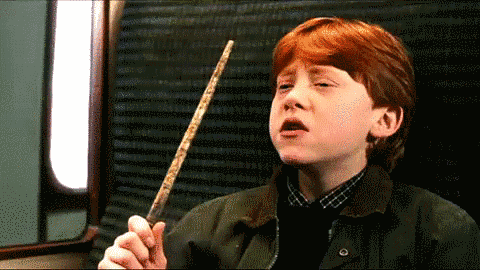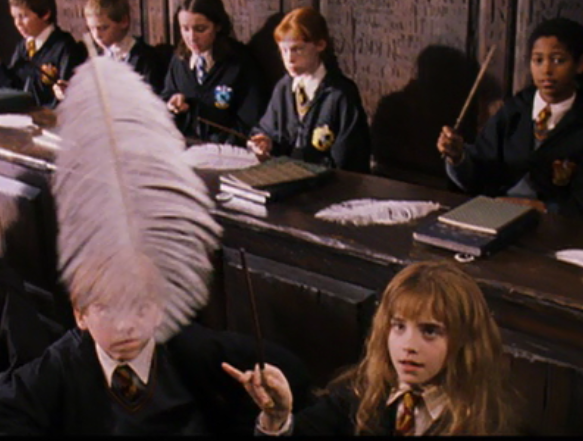Announcements
Welcome to Charms 101!
UPDATES (effective Dec. 5, 2024): 1. Lesson One has had a slight rewrite. // 2. The Introduction/Journal assignment has been changed to "My Magical Debut". // 3. A new assignment, "What’s in the Box?", has been added to Lesson One (to pair with the new RP elements in the Lesson One rewrite!). // 4. All journal assignments have been removed; these will be replaced with new assignments in the future.
Please contact Professor Laurel with any questions or concerns regarding these changes.
Please read the following FAQs before joining the class:
Where do I find assignments/lessons/PAs?
Assignments, Lessons, and PAs are found on the right-hand side (computer) or the bottom (mobile) of each lesson, in the small box. Here are video tutorials for computer and mobile if you cannot find it. All quizzes and tests are mandatory to complete your current year and to advance to the next year, but essays may not be. Assignments labeled “Extra Credit” in your gradebook are not required to move on to Charms 201.
When will my assignment be graded?
Charms receives a high volume of assignments submitted each day, and our team is composed entirely of volunteers with real-world obligations. We will not prioritize your assignment over anyone elses. I ask that you be understanding and patient.
If you look in your gradebook, you will be able to see where your assignment is in the grading queue. If you notice that your assignment has not moved at all in the queue after a week, then you may message Professor Laurel or the Head Student, Britini, to look into the issue.
What do I do if I have a question about an assignment?
Please feel free to reach out to any of our PAs with your questions! Just remember: 1. PAs will never give you the answer to a question. They are here to assist you in completing your work; not to do your work for you. 2. If you have any questions or need help, it is always best to ask before you submit your assignment! Keep in mind: Blank answers are an automatic zero; it is better to always try your best!
If you have a question about an assignment that has already been submitted, please send a private owl directly to either the Head Student, Britini, or to Professor Laurel along with your Grade ID for the assignment (this can be found in your gradebook).
If you have any other questions or comments, please do not hesitate to reach out to Professor Laurel or the Head Student, Britini!
Lesson 2) Spellcasting Basics
Welcome back, students! Today we’re going to cover a lot of material, so I hope you have your thinking caps on and your wands at the ready!
The Source of Your Magic
Let’s begin by discussing your magical ability. No one knows for sure where it comes from. Wizards typically pass it on to their children, though it’s always possible that the child of a witch or a wizard can be a “Squib”--someone with no magical ability. Despite a Squib’s inability to use magic, they still possess the limited ability to detect magical activity or use magical devices. It’s also possible that the children of muggles several generations removed from magical heritage can possess magical ability; these individuals are often described as “Muggle-born.” Those who can use magic are further broken down into what is called blood status. While this is an antiquated and somewhat prejudicial system, it is still referenced today. Pure-bloods are witches and wizards with no Muggles in their bloodline. Their blood is purely magical. A half-blood is a witch or wizard with one magical parent and one non-magical or Muggle-born parent. Neither blood type is superior over the other, and I never want you to feel like a lesser person because of it. Hermione Granger is a Muggle-born and the brightest witch of her age after all!
If you’re here in my class, it means you must have some magic! But how exactly does it work? Let’s begin with the simplest of questions. Are you still breathing? The moment you read this, I’m sure you’ll be able to feel yourself doing it. Breathing comes so naturally to us that we don’t even realize we’re doing it until we think about it. Magic is somewhat the same way. We can do it without thinking, but the experience of reflecting on how we do it can be amazing.
I would like you to do something that we seldom, as witches and wizards, ever do. I would like you to turn your mind inward, and feel for the glowing ball of energy that is your center. Can you see it? Do you feel it radiating golden light? This is your power. This is what allows you to focus your will and intention, perform the requisite wand movements and incantation, and project your magic to reshape reality.

Take a moment just to experience it: the power, flowing from the center of your being, flowing throughout your body. Now, take ahold of your wand and, keeping it away from anything flammable, visualize your power moving up your arm, through your hand and out your fingertips. Picture it flowing into your wand and imagine your wand as an extension of your body.
Your power flows through your wand, focused by your wand’s core and insulated by the wood, until it reaches the tip. You should see some colored sparks leaping gently from the tip of your wand. If not, don’t be frustrated. It can take a little practice to learn how to gather and consciously direct enough of your power to make it happen.
Now, your magical power is not really a ball of energy at your center. It is in your veins, flowing through your body with your blood. But remember what I said before: intention and will matter. Your mind and your thoughts guide your power to flow outward from your fingertips when your body would otherwise naturally keep it inside. If you had times when you were able to perform random magical acts when you were angry or scared, even without a wand, that was your mind subconsciously shaping and releasing the energy to affect your surroundings.
As you become more familiar with drawing upon your innate power, you’ll find yourself needing to make the conscious effort less and less. As you advance in your education, this is one of the biggest hurdles that prevents you from simply casting complex spells.
Spellcasting Components
You have no doubt noticed mention of spellcasting components in your classes at this point. Spellcasting components are a breakdown of what is needed to perform a spell. They are incantation (and, though not a separate component, pronunciation), wand movement, willpower, and concentration. We will go into more details on spellcasting components in later lessons, but I do want to give you a brief overview.

The incantation is, in its most basic form, the ‘magic words’. They must be spoken with proper pronunciation or, at best, nothing will happen. At worst, disaster could strike. As Professor Filius Flitwick likes to say, “Never forget Wizard Baruffio, who said ‘s’ instead of ‘f’ and found himself on the floor with a buffalo on his chest.” Though not a spellcasting component by itself, proper pronunciation is essential for successful spellcasting. Some very advanced witches and wizards can cast spells without use of an incantation, but this takes many, many years of practice.
The wand movement is the shapes you make in the air with your wand to help shape a spell. It is said that the wand movement along with the incantation help to gain the desired effect. Like the incantation, it is possible to cast a spell without a wand or wand movement, however this is incredibly uncommon. Professor Albus Dumbledore was one such wizard and demonstrates the caliber of magic it takes to perform a spell with no wand.
Willpower is the magical strength and focus needed to correctly perform a spell. It is the mental push that projects your magic and gives a spell the power it needs to work. Willpower is one of the most difficult components to master, but strong willpower is key to practicing advanced magic.
Finally, concentration is centering your mind on your magic and the desired effect in order to make a spell work. It includes the target of your magic and what you want your magic to do. While concentration and willpower are vital to performing a host of spells, they are not crucial to all spellcasting. Physical strength does not always equal magical power either, so please make sure to exercise both your mind and your body during our time together.
"Flight" Charms
Today we are going to practice some of the fundamentals of spellcasting while also learning a bit of spell history. If you’ve heard anything about the adventures of Harry Potter as a student around your age, you may be aware of one of the most basic, recognizable spells in the Wizarding World. The spell I’m referring to, of course, is Wingardium Leviosa, the Levitation Charm.
Before we discuss what we call the Levitation Charm today, we need to take a look at some imitation spells for making objects somehow move off the ground. These spells were developed to try to compete with the Levitation Charm but never managed the same level of versatility.
One of the first spells devised to try to outshine the Levitation Charm is known as the Hover Charm. Once cast upon an object that you are physically touching in some way, it allows you to move that object up and down. Due to its impractical nature and the advent of more efficient charms, the Hover Charm does not see much use.
Hover Charm
Incantation: Levioso (lev-ee-O-so)
Wand Movement: Inward spiral then upward flick
Willpower: Moderate; determines how heavy of an object can be lifted.
Concentration: None
Another charm you should know is called the Rocket Charm. This charm does not require that you be touching your target, which is a significant improvement. However, it is only capable of propelling an object straight up into the air and back down again. The height obtained is somewhat controllable depending upon the effort you put into it. However the height is not very significant and heavier objects will move less, making this a fairly impractical charm with limited use.
Rocket Charm
Incantation: Alarte Ascendare (A-lar-tay a-SEN-day-ray)
Wand Movement: Quick swish
Willpower: High; determines how high the object will ascend before falling
Concentration: None
Some time after these spells were created, the Floating Charm was developed. Unlike the Hover Charm, this spell can target a distant object rather than requiring physical contact. Unlike the Rocket Charm, this spell involves controlled vertical movement. However, the charm is not without its limitations. Objects can only be levitated a handful of feet into the air, and they cannot be directed to move any other way besides up and down. This charm still found some practical use, however; shopkeepers and the occasional witch or wizard doing some spring cleaning could levitate an object long enough to then clean and see what was underneath it.
Floating Charm
Incantation: Fluito (floo-EE-toe)
Wand Movement: Jab then upward flick
Willpower: High to very high depending on weight and distance of target
Concentration: Moderate; should be maintained on target object
The Levitation Charm, invented by Jarleth Hobart, is the closest the Wizarding World has come to true flight. The charm is easy enough that you will learn it as first year students. It allows the caster to control not only the vertical movement of an object but its movement back and forth or side to side. Height is also less of a restriction, though levitating or maintaining levitation on something very far away can be difficult. The charm even allows you to lift objects normally too heavy for you to lift yourself, though this also requires some effort.

Now, the Levitation Charm can be used on humans, however, this can only be done by very studied and practiced witches and wizards and should never, ever be attempted as a student. Doing so requires much concentration on all parts of the person and intense control over your magic. Casting this spell recklessly on another person can cause them serious injury from the force of being thrown in the air and then falling back to the ground with nothing slowing them down.
Incantation: Wingardium Leviosa (win-GAR-dee-um levi-O-sa)
Wand Movement: Swish and flick
Willpower: Low; Visualize your energy coming from your body and lifting the object.
Concentration: Moderate; on the thing you want to levitate
As you say Wingardium start the “Swish” motion. Time the swish so that it ends just after you begin saying Leviosa. Then, as you finish saying Leviosa, do the “Flick.” And remember, keep your mind focused on the target of your spell and visualize drawing energy from your body as we practiced before. I know it may take some time for you to get used to doing all of these things at once, but with practice, casting this spell and many others will become easier.
There are a few short assignments for you to complete today: A worksheet, and a quick short answer quiz. As always, make sure to read each question carefully and take your time. I am sure you will all pass with flying colors. I promise!
Image credit: Soul Writing, World of Mysteries, Harry Potter Encyclopaedia
Enroll
-
Lesson Two Worksheet, Part 1
Assignment -
Lesson Two Worksheet, Part 2
Assignment
-
Britini
Head Student
-
Jean V. Ollivander
Professor's Assistant
-
Evony Senoj
Professor's Assistant
-
Gwenyth Porter
Professor's Assistant
-
Will Bryce
Professor's Assistant
-
Tulip Karasu
Professor's Assistant
-
Sara Rowan
Professor's Assistant


